Inca Indoctrination
Crossing the border from Bolivia to Peru one thing is definitely clear, the Peruvian tourist industry knows there's a difference between "cattle class" and "courting currency class". For around twenty dollars one can take an ultra-modern tourist coach from Puno all the way to Cuzco. I'm sure during "high season" this bus is packed, but for the less than a dozen passengers boarding today, it was portable luxury. One ticket provides not only transportation but tour guide, multiple "point of interest" stops and a buffet lunch. As much as I loved the rustic nature of Bolivian travel, "Vive la contrast!"

Elevated by the potential of the day, Puno actually looked picturesque, passing by through UV tinted windows and low spectrum morning light.

Most of these "trainees" would not make it through the culling process. Many would be returned to their families, a few would be chosen as secondary wives to the Inca class of nobility, and equally remote were the dual possibilities of either becoming a polygamous wife to the Inca ruler or living as an "actual temple virgin".

Over the first rise, the shallow bay side depths of Lake Titicaca spawned thick groves of totora reeds. The volume needed to serve as a useful resource for crafting boats, houses, and floating islands now came into perspective.
La Raya, which is the highest mountain pass in Peru, was our first tourist stop of the day. This location provided the first opportunity for bus drivers to "stretch their legs" as aside from the view, this gravel turnout is solely populated with eager craft vendors.
"Picture? Picture? ... Two dollars." Well that's true if you stand with the actual llama. This distance shot elicited a dollar donation to the cause.
Who couldn't help support the mother of this cute little girl. It was perfect, we both spoke Spanish on the same level, so life was good and I got to learn all about her doll "Pedro". She was so tiny, it was almost as if a "live doll" were carrying a plastic one. However, there was no doubt as to which one was truly animated, with her child-like excitement and care for her "nino" companion.
Another hour and a half further down the road we stopped at a regionally impressive Inca (local spelling Inka) museum, where photography was strictly prohibited, with two exceptions. First was the production and installation of "good luck" bovine caricatures along the roof line. Hey, Germans cut a sapling and nail it to the highest point in a roof under construction, so who's to knock the Peruvians for having a differing luck avatar.
The other photo point was this historic timeline of native civilization, as compared to "Western" cultural development. It was actually really informative, so feel free to "zoom in" and take a look at the parallels.
Peru continues to be an arid land. Maybe all the lush green pictures of Machu Pichu and the excitement to see this wonder have led to a visual "tourist bias". With a little expectation clarity, the desolate ranch lands of Southern Peru are really quite spectacular...
... in the same way that the American Southwest draws its own beauty.
The day's schedule included almost hourly stops along the way. Compared to the drone of a non-stop route, we welcomed the diversions and cathedrals would soon become the theme.
Architecturally, these stone and mud-brick structures dominate most of the small town skylines. The detailed four-hundred year old effort caught both the sun and our eye.
Once inside, we learned a few cultural points from our local guide. (FYI, "English Speaking Guide" is a very relative concept, but since we were traveling on a national holiday the "Spanglish" effort was appreciated.) The "upside" of non-traditional guiding was to receive a slightly less edited perspective. Our guide pointed to Spanish conversion efforts, as a controlling mechanism of the local populous (similar to the Potosi efforts in Bolivia). In a convenient belief blender Mary was elevated as the Inca replacement for Pacha Mama or the deified Mother Earth. Shiny objects, such as mirrors, were embedded in the altars to mystify the locals. Ultimately, according to the guide, religious efforts were really about management and control of a native people as a submissive labor resource in the wealth mechanism of the Spanish Empire.
On a lighter note, Lipika and I were captivated by this blond stray puppy. He was so good and cute we just wanted to... send him to a Vet, get all needed rabies shots, have him bathed, flea dipped, groomed... and then we might pet him... haaa.
Lunch was provided at a quite good buffet restaurant and came accompanied by our first real dose of the cliche Peruvian Pipe band. Yes, you can hear a similar group playing "The Condor Passes" at any shopping area literally all over the world, but somehow hearing the music while actually being physically located in Peru was soothing.
Andahuaylillas was touted as the "Sistine Chapel of the Americas", by our tour group anyway, for the compliment of hand painted fresco walls. It is good to be proud of local assets, but by this point, lunch had made many of us more interested in the museum facilities next door.
In the museum we caught an actual glimpse into an Inca nobility practice. For some reason, the Inca thought it a sign of beauty and social standing to shape the skull into an extended conical design. This process started with "binding boards" strapped to an infants cranium and continued until the post adolescent skeletal formation was complete. That couldn't have been comfortable.
Our next to last stop of the day was Raqchi, the Inca temple grounds dedicated to the god Wiracocha. The complex entrance was flanked with a beautifully sturdy volcanic stone Catholic church. In moments, the source of material would be clear.
A maze of craft stalls slowed progress, but "high traffic" tourist locations provide for less aggressive vendors, leading to greater purchase intent. Free to browse, I bought my sister a couple of curios for her "world travel" shelf. The similarities of dress and physical manifestation between the truly native Peruvian people and Chinese mountain peoples is still striking. The coloring and design of this hat reminded me of the Nashi women of Western China near Tibet.
The remains of the the massive Inca temple are few but towering. Foundations are built from darker volcanic rock and sand stone, with true elevation gained from courses of mud brick. This five story center wall must have been very impressive over five-hundred years ago. (Currently, all historic brick walls are capped with tile roofing to help preserve the remains.)
The load from massive wooden beams would have been shared with supporting columns. Note the volcanic stone base and transition to earthen bricks. What is important about this is that the nearest source of this type of stone is over ten kilometers removed. So every piece of stone was hand carried over six miles to this position.
Other, smaller buildings adjoin this main temple. These structures are about two and a half stories in height and served as dormatories for temple virgins who attended religious instruction. Similarly to the Greek custom, selection as a temple virgin granted very high familial esteem.

Most of these "trainees" would not make it through the culling process. Many would be returned to their families, a few would be chosen as secondary wives to the Inca class of nobility, and equally remote were the dual possibilities of either becoming a polygamous wife to the Inca ruler or living as an "actual temple virgin".

The Inca civilization was socialist in many aspects, believing in certain "communal rights". Pivotal to successfully managing power was to insure that the populous was fed. So harvest, by and large, became the property of the state, stored in time of abundance in anticipation of dearth. Below are grain silos designed for the dry, high altitude, conditions. Only the foundations of a few remain from over a hundred original buildings, hence the easy source of building supplies for the church building conquistadors.
Last on our full day tour was a minor gift shop, home to a few incredibly soft alpaca.
Who could resist the opportunity to feed this bundle of white fluffiness. (Check out the white eye lashes.)
If you've never had the opportunity to touch a baby alpaca, go out of your way to try it.
... unless, of course, you are a lover of guinea pigs... but we all know what they are used for here. (I don't think there will be any temptation to repeat last night's dinner any time soon.)
It is always an honor to be greeted by royalty, even if it is a 30 foot bronze Inca. After a leisurely bus bound day, we were excited to be in the Inca capital of the world. The setting sun added to the mystery of the location. The thrill of exploration had returned!
And now for those who persistently pester for more moments of in depth "travel reality", here you have it. Way back in the Bolivian Amazon Basin... a bar tender who had been a native of Cuzco recommended that we stay at his friend's hotel. Well, in the tourist and backpacker heavy Inca capital, twenty bucks will get you a cot with transparently thin sheets, itchy wool blankets, no running water (actually intermittent) and a local family partying until four in the morning. Yikes, we needed to do better.

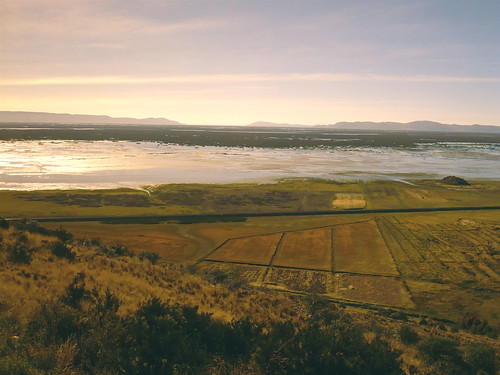

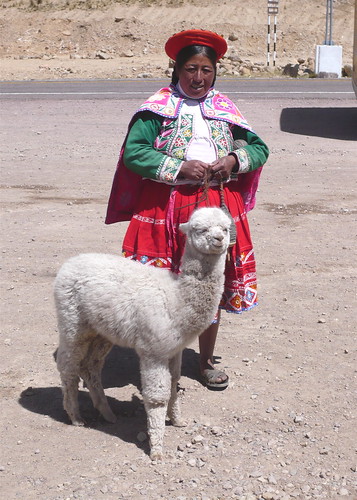
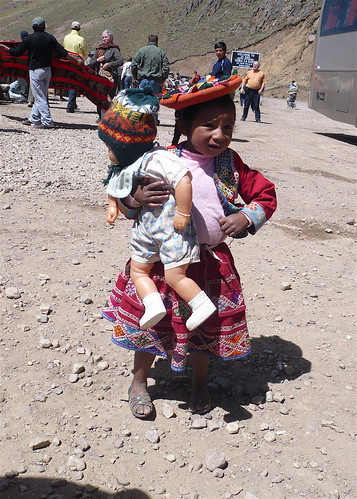
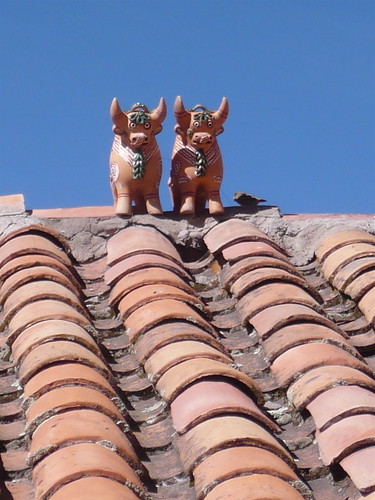
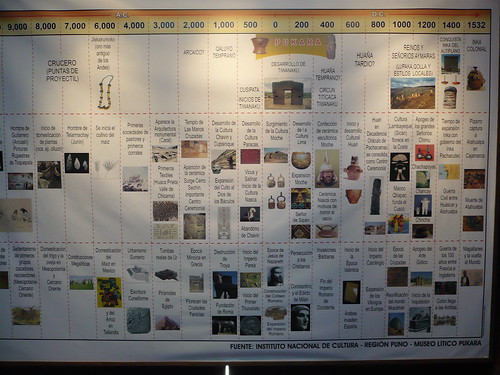
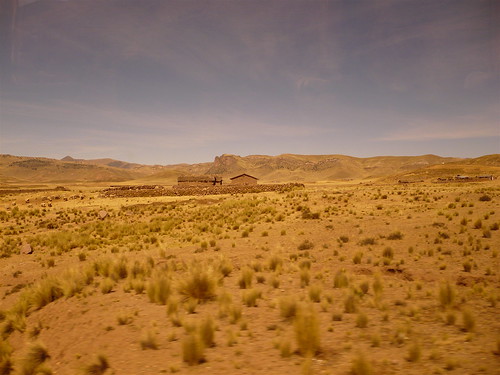
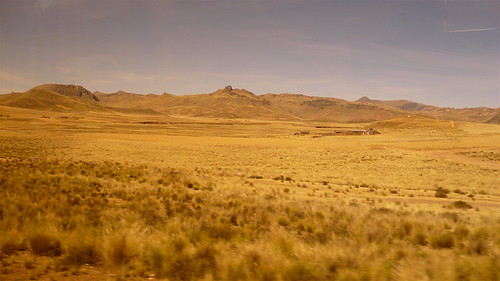




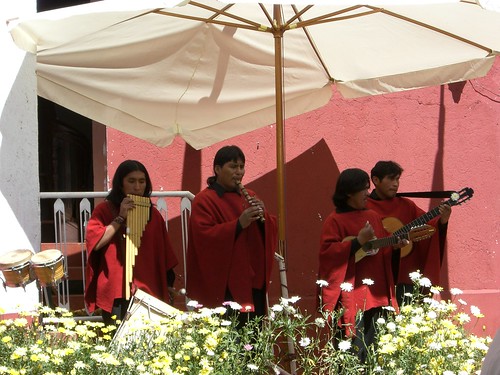


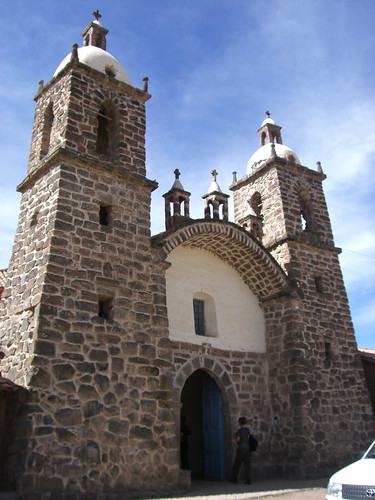
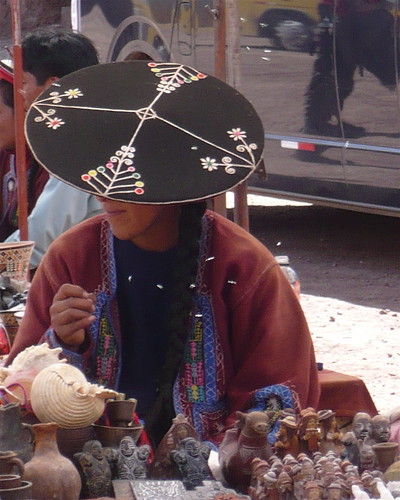
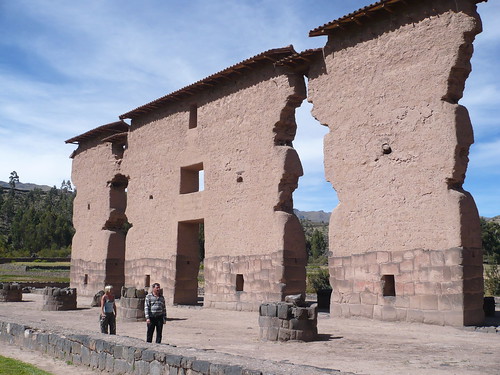
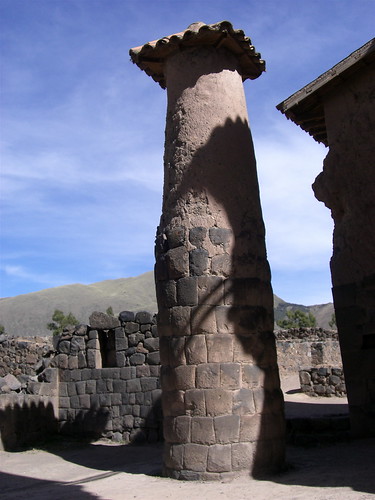
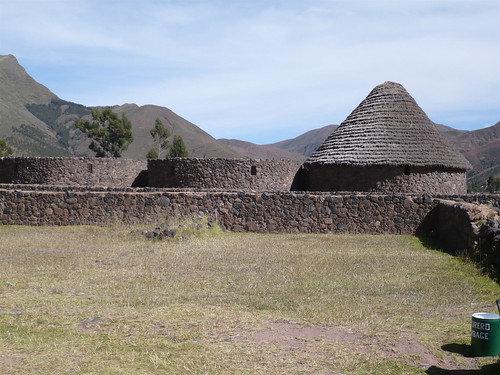
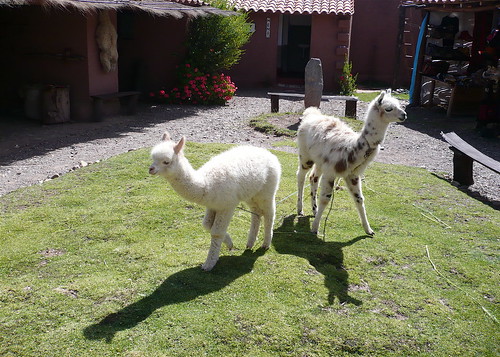


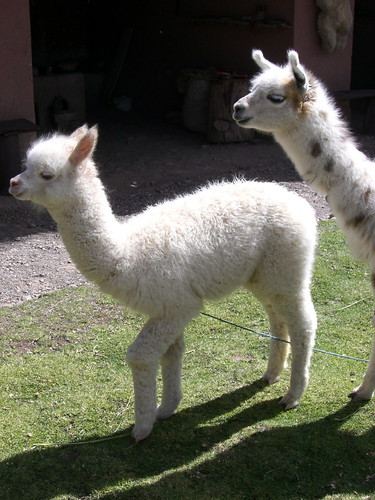
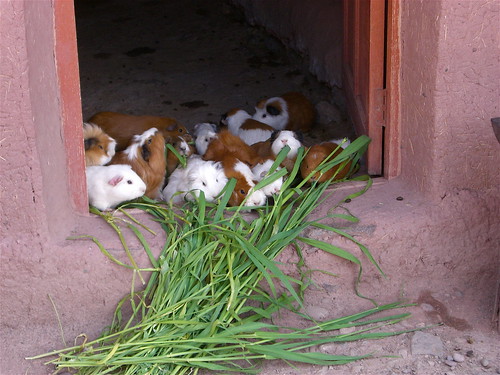
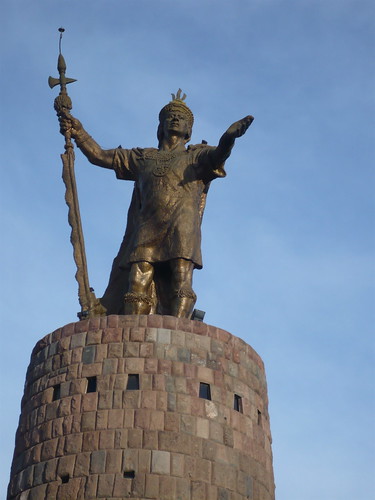
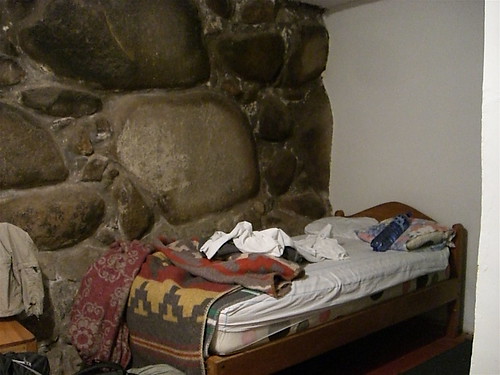
No comments:
Post a Comment